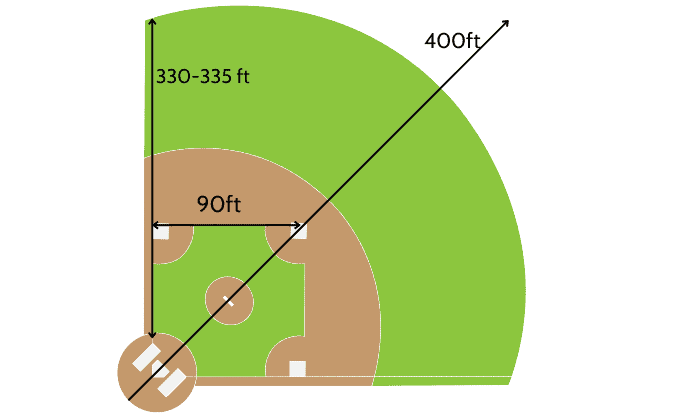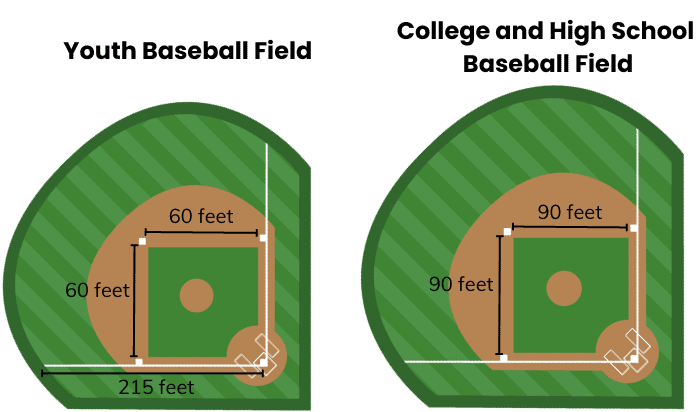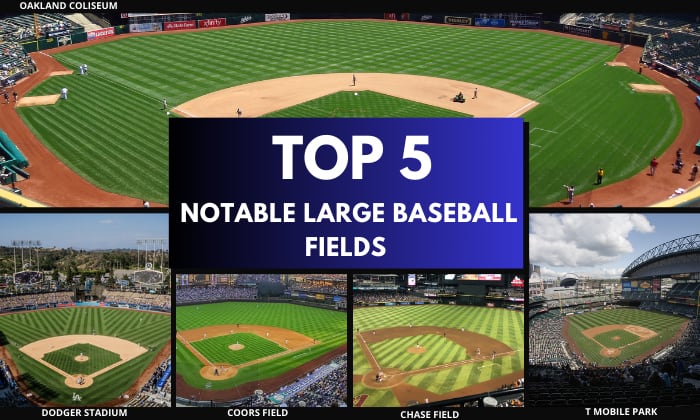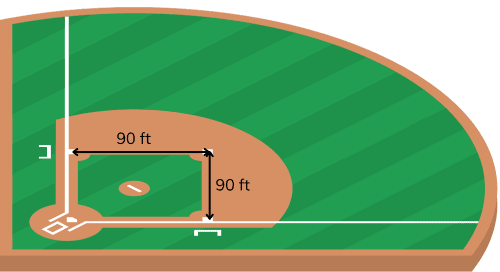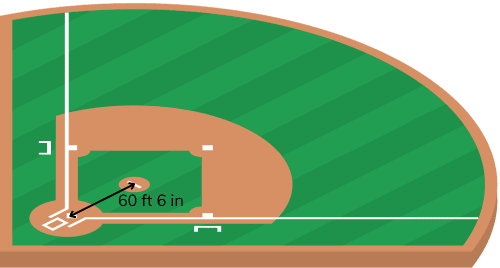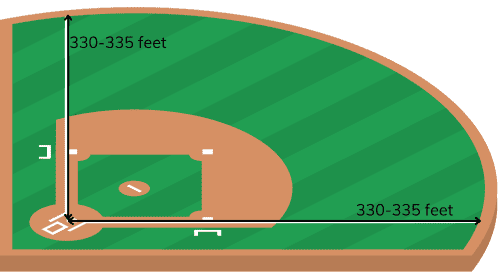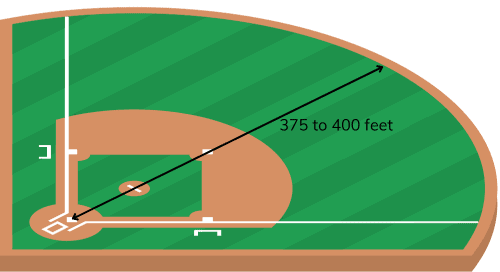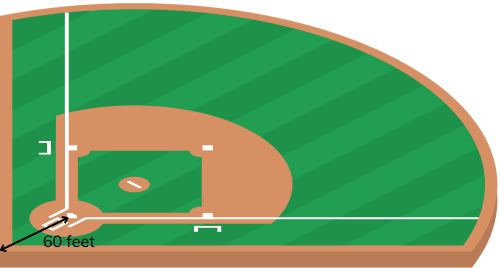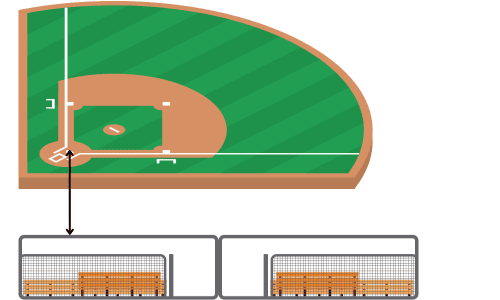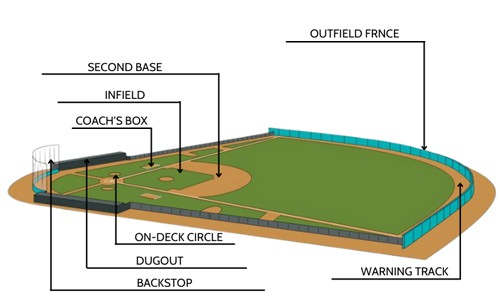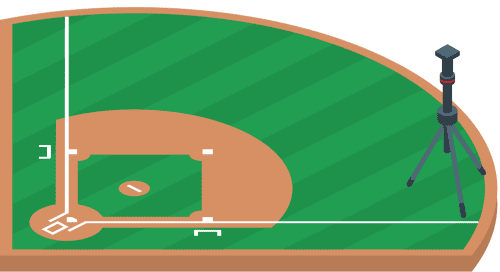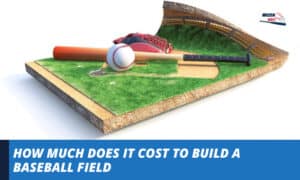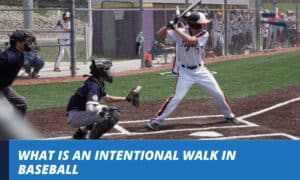If you’ve ever gazed across a baseball field, you’ve likely marveled at its sprawling green expanse. But have you wondered how many acres in a baseball field?
An estimated area to build a professional baseball field alone would be 4.5 acres (196,000 square feet). In this concise guide, we’ll break down the dimensions and the exact acreage of this iconic sporting battleground that hosts thrilling games, historic moments, and the dreams of countless athletes.
So, whether you’re a player, a fan, or just a curious mind, join us in discovering how many acres in a baseball field, the step-by-step process of measuring its dimensions, and the seating capacities of notable MLB stadiums.
Contents
How Big Does a Baseball Field Have to Be
A regulation-size baseball field with a 90-foot base layout typically requires around an average size of 4.5 acres of land. But there’s more to it than just the diamond itself.
Consider the broader picture – parking lots, spectator seating, and various amenities are all part of the package when developing a baseball field.
In the case of an MLB field, the scope extends further to encompass features like restrooms, storage facilities, dugouts, bleachers, parking areas, and buffer zones.
Now, let’s talk about variety. Not all baseball fields are created equal. How large are baseball fields?
| Fence length (feet) | Baseball field size (acres) | Baseball field size
(square feet) |
| 315 | 3 | 130,680 |
| 275 | 2 | 87,120 |
| 215 | 1.5 | 65,340 |
Dimensions of Baseball Fields
Below are some the standard measurements of a professional baseball field that you should pay attention to when building one:
| Measurement(feet) | |
| Baseline | 90 |
| Skinned infield radius | 95 |
| Home plate – backstop | 60 |
| Home plate – 2nd base | 127 + 3 ⅜ inches |
| Home plate to the left field | 320 – 350 |
| Home plate to center field | (>=) 400 |
| Home plate to the rubber’s front | 6.5 |
| Home plate circle | 26 |
Common Baseball Sizes
The baseball field acres can vary depending on several factors, including the baseball field that you are competing in, geographical constraints, economic factors, and safety considerations.
It also depends on the level of play (e.g., Little League, high school, college, MLB), available land, and specific design preferences, so it’s essential to know the specific regulations and standards for the field you are measuring.
A youth baseball field for 12-year-old players often have bases 60 feet away from each other, meaning the fences are 215 feet long.Meanwhile, in both college and high school baseball field, the distance between first base and homeplate is 90 feet.
These adjustments are made to suit the age and skill level of the players, ensuring a safe and enjoyable experience.
You will need roughly 3 acres of land to establish a baseball field. How many square feet is that size? It’s 130,680 square feet.
Here is a breakdown of the different sizes of a baseball field and the approximate size of land, fences, and bases needed:
| Field size | Fences | Bases |
| 4.5 acres | 400 feet | 90 feet |
| 3.0 acres | 315 feet | 80 feet |
| 2.0 acres | 275 feet | 70 feet |
| 1.5 acres | 215 feet | 60 feet |
Notable Largest Fields
Here are some notable large baseball fields along with their locations and seating capacities:
- Oakland Coliseum – Oakland, California, USA: Capacity – 56,782
- Dodger Stadium – Los Angeles, California, USA: Capacity – 56,000
- Coors Field – Denver, Colorado, USA: Capacity – 50,114.
- Chase Field – Phoenix, Arizona, USA: Capacity – 48,686
- T Mobile Park – Seattle, Washington, USA: Capacity – 47,929
Seating capacities in a baseball stadium can vary depending on configurations and renovations, so these numbers are approximate.
How Baseball Field is Measured
Measuring the area of a baseball field requires precise measurements and adherence to specific guidelines. Here’s a step-by-step guide on how to measure an entire baseball field:
Tools You Will Need:
- Measuring tape or measuring wheel (for shorter distances)
- GPS device or surveying equipment (for larger distances)
- Pen and paper for recording measurements
Below are the measurements you need to take:
1. Establish a Starting Point
Begin at a designated starting point on the field, which is often at home plate. You can also measure the dimensions either in meters or inches.
2. Measure the Bases
Measure the distance from home plate to first base, second base, and third base. In regulation baseball fields, these distances are typically 90 feet each, forming a square base path.
3. Measure the Pitcher’s Mound
Measure the distance from the front edge of the pitcher’s rubber (located at the center of the pitcher’s mound) to home plate. In an MLB field, this distance is 60 feet and 6 inches.
4. Measure the Foul Lines
Measure the distance from home plate to the foul poles along the left and right field lines. These distances can vary but are generally around 330-335 feet down the lines.
5. Measure the Power Alleys
Measure the distance from home plate to the points where the outfield fences curve toward the foul poles. This is typically the deepest part of the outfield, known as the “power alleys.” This distance can range from 375 to 400 feet or more.
6. Measure the Distance to the Outfield Wall
Measure the distance from home plate to the outfield wall at various points along the outfield fence to account for any variations in the wall’s distance from home plate. Measure from the nearest edge of the wall.
7. Measure the Distance to the Backstop
Measure the distance from the home plate to the backstop, which is the protective screen or wall behind the catcher. This distance can vary but is typically around 60 feet in regulation fields.
8. Measure the Distance to the Dugouts
Measure the distance from home plate to the dugouts on both the home and away team sides. Measure from the nearest edge of the dugout bench to home plate.
9. Measure Other Relevant Distances
Depending on your specific needs, you may want to measure other distances, such as the distance from the dugouts to the foul poles, the distance from the dugouts to the backstop, or the distance from the pitcher’s mound to the outfield wall.
10. Use GPS or Surveying Equipment for Accuracy
For larger distances or when extreme accuracy is required, consider using GPS devices or surveying equipment.
11. Record Your Measurements and Double-check
Note whether you are measuring from the nearest edge or the center of certain points, as this can affect the results. Also, compare your measurements to official measurements if possible, to verify their correctness.
Conclusion
We’ve uncovered how many acres in a baseball field, revealing the foundational dimension that shapes the heart of America’s beloved pastime.
Every baseball field, from its meticulously measured dimensions to the thrilling moments etched into its history, holds a unique significance for players and fans alike.
So, the next time you step onto a baseball diamond or into a stadium, remember that it’s not just about the acres—it’s about the passion, strategy, and competition that make baseball a timeless and cherished sport.

A powerful swing and the ball is flying across the field, just one hit, and we might never forget the thrill it brings. I do not know about you, but I never do. Every baseball game is the chance to compete with others and cooperate with your teammate. It is among my biggest passions.




